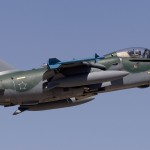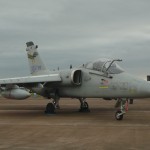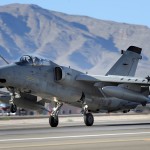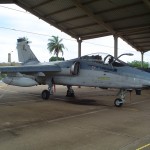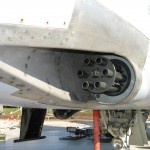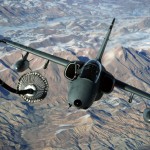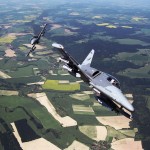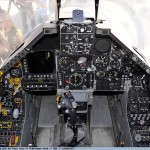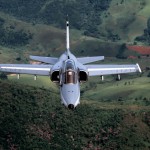
There were more than 2,170 MiG-19 “Farmers” built. The Chinese Shenyang J-6 was a domestically produced variant, with 3,000 built. China developed the successful Q-5 “Fantan” attack jet from the J-6, and 1,300 of those were produced. The MiG-19 entered service in 1955. The Q-5 entered service in 1970 and still sees limited service in the People’s Liberation Army Air Force right through 2012.
That is one successful jet.
In truth, the PRC loved the MiG-19. It’s design was perfect for China in both the J-6 fighter and Q-5 attack roles. It was sturdy, supersonic, handled well and could hold a lot of (and a lot of different) weapons. The Q-5 remains in service in China as well as North Korea, Myanmar, and Zambia as of 2010. Pakistan operated the Q-5 from 1983-2011.
China started manufacturing the J-6 locally in 1958 and soon developed a taste for a ground attack jet. The J-6 was more like the MiG-19 — a fighter configuration. The Q-5 “Fantan” was designed by noted Chinese aircraft designer Lu Xiaopeng who studied aircraft design in the U.S. but was loyal to the PRC. He used the MiG-19 as a basis but stretched the fuselage and area ruled it to reduce drag and accommodate a 13-foot weapons bay. The plane also had bigger wings. According to Chinese test pilot Yang Guoxiang in a 2010 interview with Air and Space Magazine, the final product was more like the American F-4 “Phantom II” than the MiG-19.
The Q-5 shares the J-6’s engines, the Liming Wopen WP-6 As.
The plane features two 23 mm cannons with 100 rounds each. This was followed by wing and fuselage hardpoints for rockets, missiles and bombs. Some variants had internal weapons bays, while a long-range Q-5I used a fuel tank in place of the bay.
China built many variants of the Q-5. The Q-5A was very common and featured an extra pylon under each wing for infrared anti-air missiles. There was also a modified Q-5A that carried nuclear weapons. Yang Guoxiang was the test pilot for the Q-5’s nuclear test. He successfully dropped a nuclear bomb after his first test was a near-disaster when the bomb failed to detach from his plane. He shared memories of his test with Air and Space Magazine:
“As soon as the bomb was gone, I reversed course to get far away from the blast zone and activated shields that would protect me in the cockpit. Then I saw the flash, a very big flash. The bomb exploded in the air, at a pre-determined height above the ground. I felt the shockwave—it rocked me like a small boat in the ocean—and then I saw the mushroom cloud rising up into sky. By that time I was already 20 kilometers (12.4 miles) away from ground zero.”
Other variants were made to drop laser-guided bombs, to conduct forward air control, and for export to China’s allies. Export variants are known as the A-5.
The “Fantan” is a capable ground attack jet. Advancements in avionics and other systems have kept it flying, with 150-300 remaining in Chinese service as of 2011. It is most comparable to the American Douglas A-4 “Skyhawk” or the Yugoslav-Romanian J-22 “Orao.”
Specifications
General
Crew: 1
Length: 51 ft 4 in
Wingspan: 31 ft 9 in
Height: 14 ft 3 in
Empty weight: 14,050 lb
Max. takeoff weight: 26,080 lb
Engines: Two Liming Wopen-6A turbojets with 6,614 lbf each or 8,267 with afterburner
Performance
Maximum speed: Mach 1.12
Range: 1,200 mi
Combat radius: 250-370 mi
Ceiling: 54,133.9 ft
Thrust/weight: 0.63
Armament
Guns: Two Norinco Type 23-2K 23 mm cannons, 100 rounds each
Hardpoints: 10 (4× under-fuselage, 6× under-wing) with a capacity of 4,400 lb
Rockets: 57 mm, 90 mm, 130 mm unguided rocket pods
Missiles: PL-2, PL-5, PL-7 air-to-air missiles
Bombs: 50 kg, 150 kg, 250 kg, 500 kg unguided bombs, BL755 cluster bombs, Matra Durandal anti-runway bombs
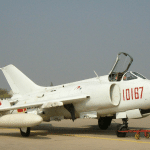
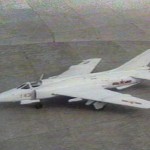
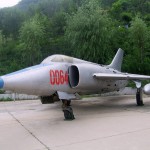
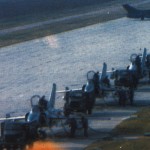
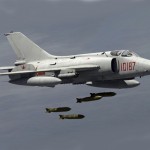
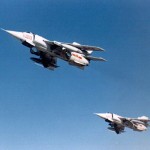
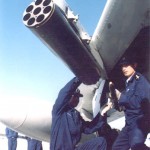
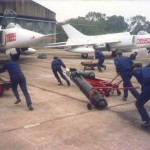
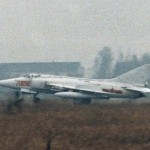
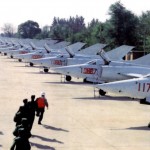
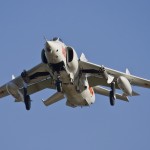
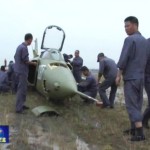
 Brazil is seeing an economic windfall from military exports to Africa, as American export restrictions to often war-torn regions have given an opening for other industrialized nations to cash in.
Brazil is seeing an economic windfall from military exports to Africa, as American export restrictions to often war-torn regions have given an opening for other industrialized nations to cash in.

